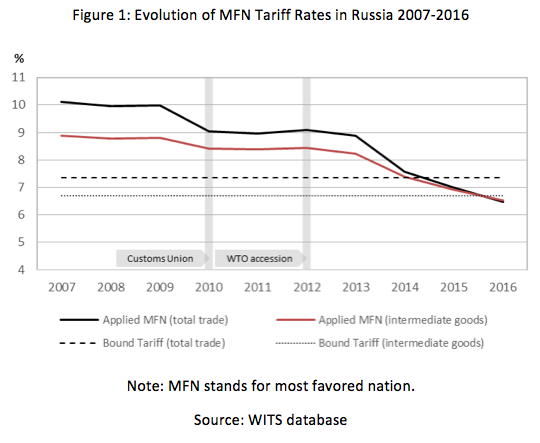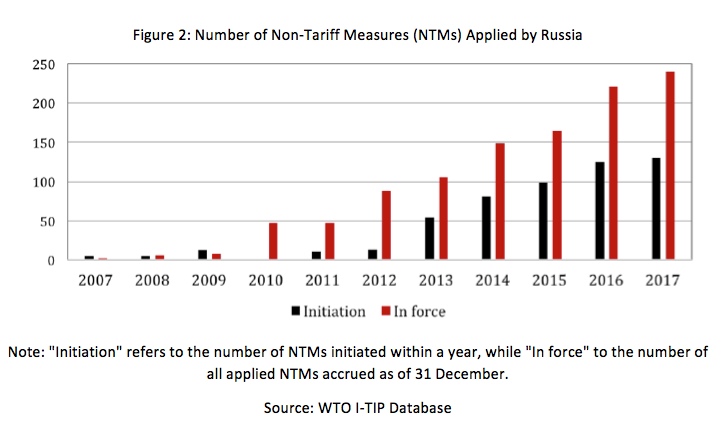Editor’s note: This post is part of a series showcasing Barcelona GSE master projects by students in the Class of 2018. The project is a required component of every master program.
Authors:
Deepshikha Deb, Nils Handler, Vladimir Peciar, Ksenia Proka, Juliane Stolle
Master’s Program:
International Trade, Finance, and Development
Paper Abstract:
This paper analyzes whether access to imported intermediate goods can raise export performance of Russian firms. We employ an instrumental variable strategy which exploits variation in firm-specific input tariffs to identify the effect of imported intermediates on firm exports during the period 2007-2013, utilizing a unique firm-level database on firm characteristics and customs declarations. We find that input tariff reductions can raise firm exports significantly, as can other measures aimed at increasing imports of intermediate goods of exporting firms in Russia. Import promotion targeted at exporting firms in high-tech sectors can be up to three times more effective. Better access to imports can also help increase the currently low share of exporting firms within the Russian enterprise landscape. Our results suggest that with the rising globalization and fragmentation of production processes, countries interested in raising exports need to think strategically of promoting imports as well. We propose and discuss several policy measures for Russia in the areas of tariff regulation, non- tariff measures, trade facilitation and trade integration.
Conclusions:
Using a comprehensive firm-level dataset which combines information on Russian company characteristics, involvement in trade and input tariff rates, we reveal a strong positive impact of intermediate imports on firm exports in the manufacturing sector. These results imply that improved access to intermediate goods at the international market can serve as a means to raise Russia’s currently weak export performance outside the natural resource sector. Import promotion policies targeted at intermediate goods imported by firms in high-tech sectors can be especially effective and raise exports by up to three times more than in other sectors. Better access to imports can also help increase the currently low share of exporting firms within the Russian enterprise landscape.
Our estimation results indicate that a one percentage point decrease in input tariffs would raise firm exports by approximately one percent. Even though tariffs have been significantly decreased over the past decade in the context of regional integration and Russia’s WTO accession (see figure 1), there is still ample room to lower input tariffs in order to promote exports. More than 40 percent of intermediate goods imported by Russian exporting manufacturing firms and more than 30 percent of goods imported by exporting firms in high-tech manufacturing sectors still entered the customs union at a tariff rate above 5 percent in 2015. Besides tariff reductions, Russia could consider lowering non-tariff measures (NTMs) and enhancing trade facilitation, which can also contribute to better access to intermediate goods of exporting firms, as suggested by our IV results. As can be seen from figure 2, NTMs have increased sharply since Russia joined the WTO in 2012. It should be pointed out, however, that trade policies aimed at promoting imports of intermediate goods alone will not be sufficient to boost non-oil export growth and export competitiveness of Russian firms. To bring the desired success, they need to be combined with a range of other important policies, including improving access of Russian exporters to foreign markets and simplifying the existing export regulation, as well as comprehensive structural reforms and measures to improve the business environment.
Key Figures:


Download the full paper [pdf]
More about the ITFD Program at the Barcelona Graduate School of Economics
